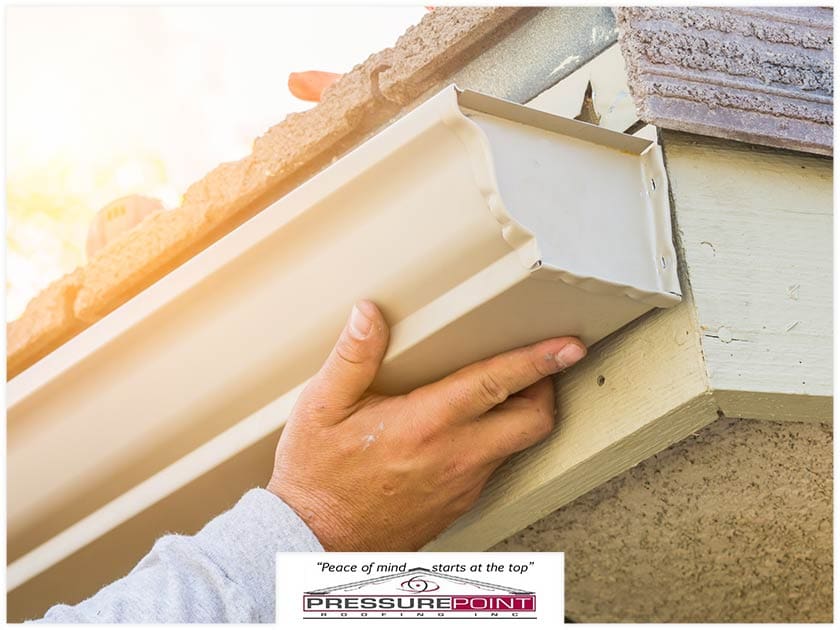How Gutters Sizes Are Determined
There are a number of factors that affect how much water the gutters of a residential roofing system can handle at any given time. For example, an inch of rainfall might not sound like much, but if this downpour happens within 30 minutes or less, most standard-size gutters will overflow and flood. Another factor is the size and capacity of the gutters and downspouts themselves.

While you can’t control the amount of rain you get, you can control your gutter size.
Professional Installation
gutters are a critical part of roof maintenance and care. Problems with your gutters and downspouts can often extend to your roof, siding, foundations and other parts of your home. With this much at stake, it’s important to only trust licensed contractors to handle their installation, repairs and other gutter work.
Size and Slope of the Roof
Larger roof areas will, of course, have larger run-offs. Additionally, the steeper a roof panel is, the more water will flow down to its gutters. These are some of the major factors that professional roofers and gutter installers consider when determining gutter sizes. Joints and roof connections also tend to have more run-off than any other area, making them prime spots for downspouts.
Rainfall Intensity
Gutter installers also take average rainfall data in your local area into consideration. Ultimately, they size gutter systems to handle water flow rates that are a little bit higher than the local averages. This is to make space for the possibility of intense rainstorms every once in a while.
At Pressure Point Roofing, LLC., you can count on our professionals to help you find a gutter solution that’s 100% right for your home. Give us a call at (541) 772-1945, or fill out our contact form to schedule a consultation and request a free estimate on gutter installations today. We serve homeowners in Central Point, OR, as well as surrounding areas.
Schedule a Consultation
By submitting this form, I agree to receive calls and text messages (including those sent using automated technology) from Pressure Point Roofing, LLC and its representatives at the number provided. Message and data rates may apply. Message frequency may vary. Consent is not required as a condition of purchase. Reply STOP to unsubscribe at any time.
Related Content
Partners and Awards












